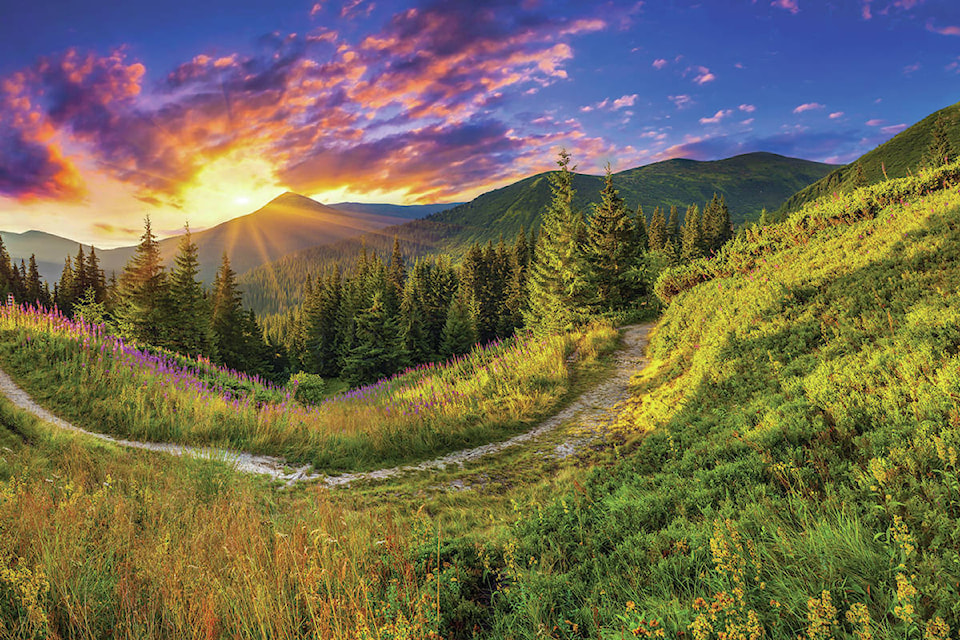A survey mailed to Creston Valley residents last week doesn’t put enough emphasis on outdoor recreation, which is typically far less costly than indoor facilities, Trails for the Creston Valley Society says.
“Respond and help shape the next 25 years! The Recreation Master Plan survey is in your mailbox. Outdoor recreational services, specifically parks, trails and water access, in our region are very poor comparative to the rest of the RDCK. Parks and trails cost pennies on the dollar to build and maintain versus big box recreation. Vote yes to secure public trails and river and lake access opportunities before they are lost forever to development and privatization. If you don’t see the box on the survey, write it in anyway! Make your voice heard!”
That’s the message the Society wants to get out. And others are also chiming in.
Gwen Telling, a force behind the Creston Rotary Club’s trail-building efforts on Thompson Mountain, among others, says that need for a riverside regional park on Goat River, is being lost in the bureaucracy of the Regional District of Central Kootenay and local politicians.
“We have been told that it will go ahead, but now no two people seem to have the same answer,” she said on Sunday. “We don’t have anything to compare to the waterfront parks in the West Kootenay, and that needs to change.”
Local residents already know the value of outdoor recreation, especially for health and well-being, stewardship of wild and nature spaces, sustaining our population and supporting our economy, the Trails Society says.
“However you may not know why there is a lack of outdoor recreation in this area and how to help. Outdoor recreation has a valued place in our community and yet RDCK Areas A, B, and C do not have a fair representation of trails, parks and lake/river public access compared to the other side of the Kootenay Lake and compared to other BC communities. The Town of Creston has most recently been playing catch-up to other towns and has been making some strides in this direction.
Why is it that we lack in outdoor recreation? Can the RDCK Recreation Master Plan help improve the poor representation of parks, trails and public access to lakes and rivers? If so, how?
“The gist of the situation is that Areas A, B, and C have not fulfilled their land use bylaws obligations by not paying monies (in Area A at least a substandard amount) into parks and recreation budget line item (at a cost of deteriorated unofficial existing sites and trails). These monies could have helped pay RDCK planners staff time. Since we don’t pay towards RDCK planner staff time we can’t compete for staff time like other Central Kootenay communities do who are busy adding parks and trails to their inventory. It is worth noting here that outdoor recreation comes at a fraction of the cost of indoor recreation.
“So what does not having money in a line item mean for us? Well, when a stewardship group such as TCVS wants to make improvements to a proposed site (i.e. Old Ferry Landing) with awarded grant money and corporate donations they must first have RDCK staff involved in the setting up of Licences To Occupy and Memorandums of Understanding (MOU) with the other parties involved, such as Ministry of Highways or Ministry of Forests or even one of our Dyking Districts. “Until a Licence of Occupation or MOU is finalized no improvements can legally take place. When we don’t pay into the RDCK planner time we cannot receive their help. This is why so many projects have been put on hold here including the making of improvements to select public lake access sites.
“There are many different methods of acquiring outdoor recreation besides the purchasing of land. Most people are not aware that recreation sites can be acquired and made available to the public through estate donation, leases, licences of occupation, MOU, easements, transfers from ministries, new subdivision requirements (for park space) and trades. Most often outdoor recreation is developed through the numerous grants available and the operating of sites are done through stewardship groups who manage to take care of sites with small budgets because they contract instead of employ.
“So, it appears that the way to rectify this situation of lack of parks, trails and water access is for you to let the RDCK know how important outdoor recreation is to you. Then outdoor recreation groups can remind RDCK that the people have spoken. The RDCK can then allocate money toward Parks and Recreation to support the community in reviving their lost parks and trails and add to new trails and improve lake and river access.”
The basic message that Trails for the Creston Valley Society, and Telling, want to get across is that Creston Valley has a superb indoor/outdoor facility in the Creston & District Community Complex, but that a growing number of outdoor enthusiasts want their interests to be addressed, too.
